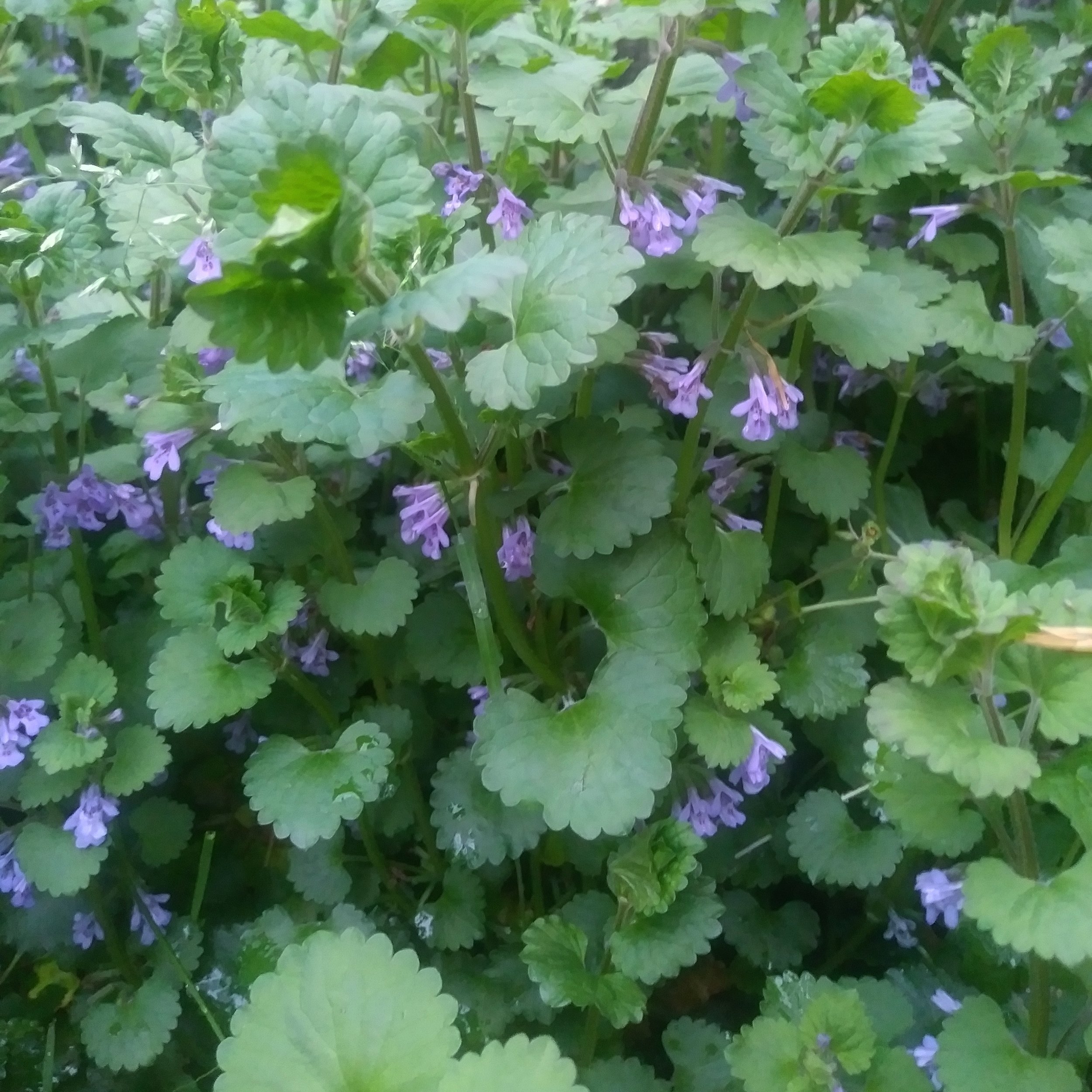Kudzu is a fairly recent addition to the Southern landscape. We all know it’s invasive, but how exactly did it get here? Ironically, kudzu is a rare and treasured plant in its native Japan. It’s cultivated as an ornamental vine in gardens and prized for its purple blooms.
Read moreWild Edible Wednesday 5/29 - Orange Daylily
“So named because the flowers bloom and die in a day, it’s probably a familiar plant to most of us. I think almost everyone had a grandmother who grew them in her garden, and even if not, you’ve certainly seen them on summer roadsides. They bring back happy memories for me of speeding down unkempt backroads in early summer with the windows rolled down…. “
Read more#WildEdibleWednesday 5/8 - Red Clover
“As medicine advances and more and more compounds are synthesized from natural sources, maybe it’s time we humbled ourselves and realized that the ancients knew what they were talking about.”
Read moreWild Edible Wednesday 5/1 - Creeping Charlie
“It goes by a weird plethora of alternate names, including Creeping Charlie, Gill-Over-the-Ground, Hedgemaid, Tun-hoof, Runaway Robin, Lizzy-Run-Up-the-Hedge, Catsfoot, and Alehoof. No, not kidding. And don’t ask me how half those names came to be, other than people in the British Isles got bored.”
Read moreWild Edible Wednesday 4/24 - Common Purslane
“Once you have purslane on your property, you’ve got it forever. There’s no getting rid of it, and the harder you try, the more it spreads. It’s fire-resistant, pretty indifferent to most herbicides, and pulling it only breaks the roots into fragments that turn into more plants. So the moral of the story is… if you can’t beat it, eat it!”
Read moreWild Edible Wednesday 4/10 - Common Vetch
“Vetch has fed humans for thousands of years. It’s been a forgotten companion to us that helped us leave the nomadic lifestyle of the stone age, settle down, and build civilizations. Although it’s rarely eaten in the modern era, you owe it to your ancient ancestors to give it a shot and eat it at least a time or two.”
Read moreWild Edible Wednesday 4/3 - Common Blue Violet
“The violet had great significance to the ancient Athenians, who wove necklaces and garlands out of European sweet violet blossoms for revelers to wear at their wild, wine-fueled spring equinox festivals. They believed violet moderated anger, strengthened the heart, and helped prevent “wine fumes” and next-day hangover headaches. “
Read moreWild Edible Wednesday 3/27 - Eastern Redbud
“Redbud seems to have taken root in the culture of whatever area it grows in. For most native tribes, the charcoal from redbud wood was the color of choice for their black war paint, which symbolized power and aggression.”
Read moreWild Edible Wednesday 3/20 - Chickweed
“Chickweed is one of the hardiest and most common plants on earth. Native to northern Europe, it has naturalized on every continent – even Antarctica.”
Read moreWild Edible Wednesday 2/20 - Creeping Cedar
“Creeping Cedar looks like something out of the age of the dinosaurs, because it is. Before that, actually. Remains of this exact plant are being burned as coal this very day.”
Read moreWild Edible Wednesday 1/23 - Universal Edibility Test
“Today, we’re going to cover one of the most fundamental rules of foraging plants. And really, it’s one of the most useful pieces of wilderness survival knowledge you can have, period.”
Read moreWild Edible Wednesday 1/16 - Dandelion
“The idea that dandelions are a weed is an extremely new one in human history. In America, it only began in the post-WWII years when suburbs began to plague the land.”
Read moreWild Edible Wednesday 1/9 - Leatherleaf Mahonia
“Often overlooked as a bland landscape plant or an semi-invasive shrub, this is, in fact, a valuable medicinal plant with a fascinating backstory that involves plant smuggling and China’s Opium Wars.”
Read more#WildEdibleWednesday 11/7 - American Sweetgum
“If you were around SARCRAFT in the early days, you would have heard Jonathan and I refer to Sweetgum as the most useless tree in the forest, only good for making toothbrushes (which we’ll touch on in a minute.)”
Read more#WildEdibleWednesday 10/24 - Dogwood
“During the Civil War, the Yankees put us in a tight spot by blockading our ports, preventing any shipments of supplies or medicine from coming through from the outside. In the Deep South, malaria and yellow fever were serious problems back in that day, and were taking many desperately needed men out of the action on the battlefield.”
Read more#WildEdibleWednesday 10/3 - Mullein
“Mullein has a whole host of great uses for bushcrafters and other outdoorsmen, as well. Its most famous and obvious non-medicinal use is as, well, toilet paper. If you’ve ever felt a mullein leaf, it’s a pretty natural idea to use them for this purpose.”
Read more#WildEdibleWednesday 9/26 - American Beautyberry
“The scientists at Ole Miss who discovered callicarpenal first began their research because their grandparents had all used beautyberry leaves to repel mosquitoes. Lo and behold, they were right.”
Read more#WildEdibleWednesday 9/19 - Muscadine
“The bouquet is as follows: It smacks you in the face with a wallop of intense muscadine flavor followed by a wall of cane sugar, finishing with a pure alcohol burn. There are notes of pure muscadine (obviously), oak, citrus, grape Jolly Rancher, ethanol, and a hint of vinegar. The overall experience is jarring, but not at all unpleasant. I dare California to do better.”
Read more#WildEdibleWednesday 9/12 - Orange Jewelweed
Medicinally, jewelweed really only has one application: Used externally, as a poultice or decoction. However, in this application, it’s fantastic.
Read more#WildEdibleWednesday 9/5 - Kudzu
Although non-native and highly invasive, Kudzu has become as much a part of the South as barbecue, pecan pie, dirt track racing, and smiling and waving at random strangers.
Read more



















